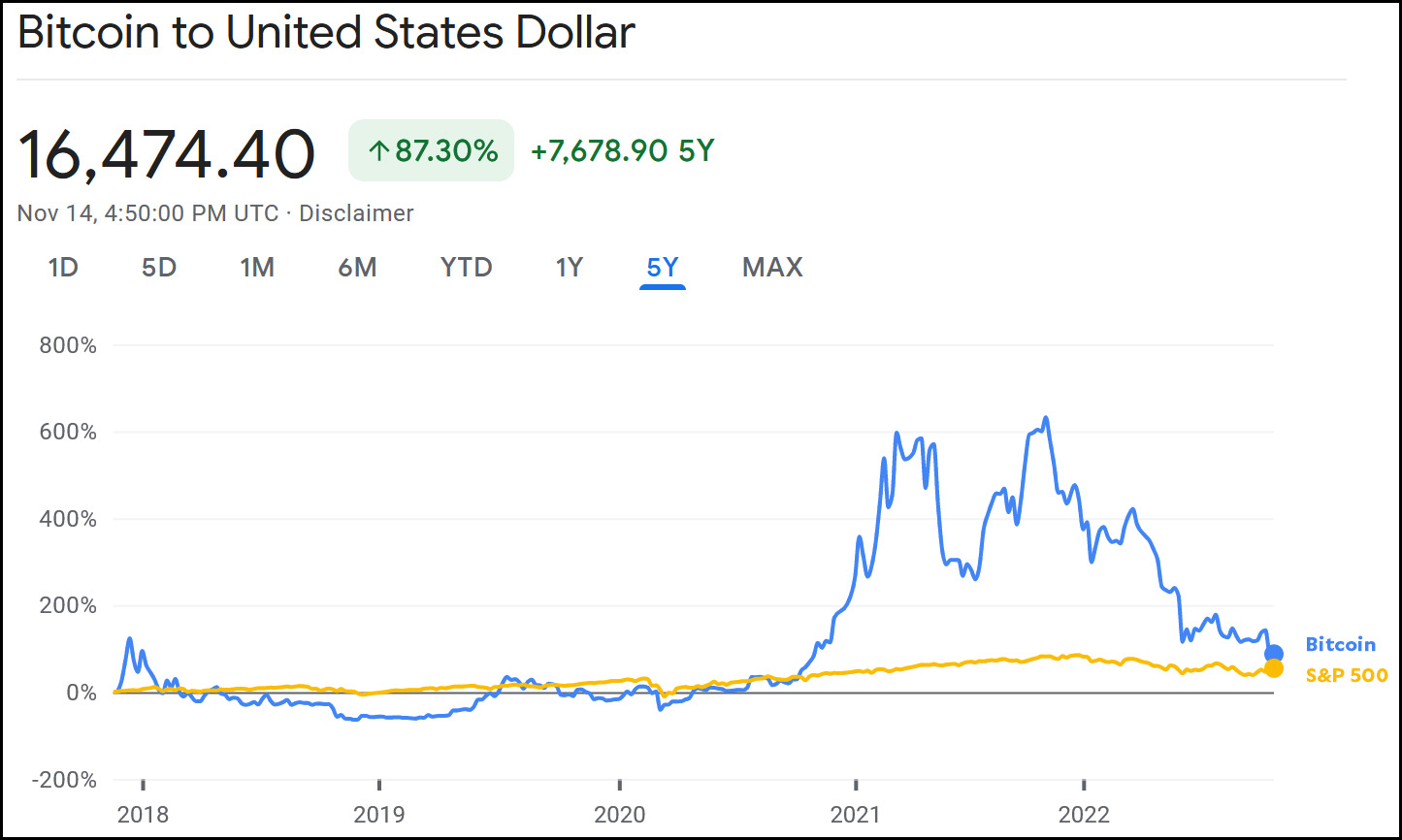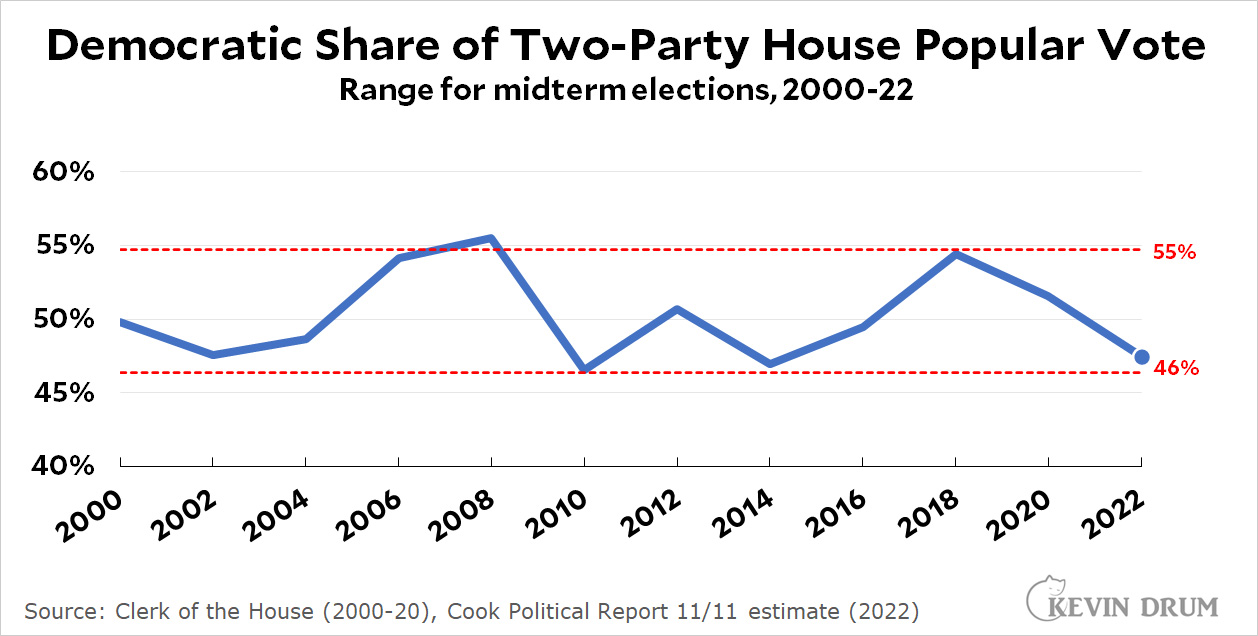Over at MarketWatch, Jeffrey Lee Funk and Gary Smith present a list of Silicon Valley's biggest losers:
 I don't have any real comment on this except yikes. I didn't quite realize you could lose this much money. I'm such a hayseed.
I don't have any real comment on this except yikes. I didn't quite realize you could lose this much money. I'm such a hayseed.
Cats, charts, and politics

Over at MarketWatch, Jeffrey Lee Funk and Gary Smith present a list of Silicon Valley's biggest losers:
 I don't have any real comment on this except yikes. I didn't quite realize you could lose this much money. I'm such a hayseed.
I don't have any real comment on this except yikes. I didn't quite realize you could lose this much money. I'm such a hayseed.
A reader asks what I think of the theory that Republican losses in the midterms were partially due to Republicans killing off their own voters by railing against COVID-19 vaccines. He points to this piece by Jonathan Last as an example:
Lots of factors were at play. Including one that doesn’t get talked about much: excess COVID deaths. There’s been an ongoing study of the Republican resistance to the COVID vaccines and the preliminary findings suggest that post-vaccine, Republicans accounted for about 80 percent more of the excess deaths than Democrats.
....Many of the Republican losses were by extremely small margins. For example: Adam Laxalt lost the Nevada Senate race by 6,000 votes. (Go look at that COVID number again.)
The best estimate of partisan differences in COVID deaths that I know of is from an NBER paper that Last links to here. Three Yale researchers concluded that in the post-vaccine era (starting around May 2021) the excess death rate for Republicans was 5.4 percentage points higher than it was for Democrats. That's everything we need to know. All that's left is a bit of arithmetic:
That's not enough, no matter how many what ifs you toss out. Nevada, for example, accounts for about 1% of the total US population, so it probably accounts for about 1,300 extra Republican deaths. Even in the ultra-tight Senate race, it means only that Adam Laxalt lost by 6,000 votes instead of 5,000.
The COVID theory is an appealing one, but the numbers just aren't there. In a race decided by a tenth of a percent or so, you might argue that vaccine denial played a role. But that's how close it would have to be.¹
¹The closest Senate race was Nevada, with a winning D margin of 0.82%. The closest governor's race was Arizona at 0.78%. The closest House race at the moment is NM 2 at 0.66%, though that may change. None of these are close enough to have been plausibly decided by COVID deaths.
This is epic. Too bad we couldn't get it before the election.
.@VaughnHillyard: "Could I say something about Kari Lake, you guys?" pic.twitter.com/UvhwEtOkPD
— MSNBC (@MSNBC) November 15, 2022
This is it. Today the world population is officially 8 billion people.
The United Nations has declared that the world's population will pass 8 billion people on 15 November, but future growth is expected to slow as fertility rates fall across the globe https://t.co/oSbblnhHQu
— New Scientist (@newscientist) November 10, 2022
Over at National Review, Jason Richwine comments on one of my hobby horses:
Early in his first term as Florida governor, Ron DeSantis pressed the legislature to mandate universal E-Verify, the online tool run by the Department of Homeland Security that allows employers to confirm that their employees are legally authorized to work in the U.S. Unfortunately, business interests lobbied hard against it, and the bill that eventually reached the governor’s desk required E-Verify only for the public sector and its contractors....With greater political capital thanks to his smashing victory last week, DeSantis should try again for universal E-Verify.
The Republican Party has long been viewed as a happy collaboration of business conservatives and social conservatives whose interests rarely conflict. Business conservatives want low taxes and less regulation while social conservatives want abortion restrictions, gun rights, and so forth. Both sides can usually ignore the other without a problem.
But what happens on the odd occasion when a real conflict breaks out? Immigration is a great test case. Social conservatives want less of it but business conservatives want continued access to lots of cheap, docile labor. Who wins?
Let's take a look. Mandatory E-Verify works. This is why business conservatives hate it. Building a wall, by contrast, is little more than emotional symbolism, which is why social conservatives love it and business conservatives don't care one way or the other.
So what did Donald Trump do? Naturally he built a wall and ignored E-Verify. Business conservatives were happy since they knew the wall was little more than a con with no lasting impact. What did the Florida legislature—which was 70% Republican at last count—do when they were given a choice? They voted down mandatory E-Verify. Business conservatives were satisfied yet again and social conservatives were just sort of confused. They'd been suckered one more time.
So the answer to who really controls the Republican Party is: business conservatives. Nearly everyone who's really thought about it agrees that the most effective single thing we could do to rein in illegal immigration is to pass mandatory E-Verify at the national level and fund it with fines levied on employers. That would piss off business interests, which is probably the best indication that it's actually effective. It's also why it's consistently dead in the water.
Now, this would reduce ordinary illegal immigration, but it wouldn't necessarily have any effect on asylum filings, which represent a whole different problem. That requires a massive expansion of the judicial system so that asylum cases can be resolved quickly and fairly. But that's a topic for another day.
The New York Times says the price of farmland in South Dakota is shooting up, so I thought I'd show you all a picture of what this beautiful land looks like. It's a shame that—
Oh, wait. This isn't South Dakota. It's the Quail Hill Open Space Preserve about a mile from my home. The whole thing amounts to a couple of acres of scrub bordering the San Diego Freeway, and I'm not quite sure why it qualifies for preserve status. But I'm sure there's a reason.

Kevin's Three Laws of Politics:
Don't mistake details of the moment for real politics. The former is paper shuffling and bottle washing: necessary but ultimately just scutwork. In a democracy, real politics is all about appealing to public opinion on a grand scale. If you don't do that, nothing else matters.
Here you go:
 Over the past two years, an S&P 500 index fund has been a far better investment than Bitcoin. But even for those who got in early five years ago, Bitcoin has done only a bit better than the S&P.
Over the past two years, an S&P 500 index fund has been a far better investment than Bitcoin. But even for those who got in early five years ago, Bitcoin has done only a bit better than the S&P.
Where's the fun in that? If you're going to end up in the same place as the most boring stock index in the world, why not just buy the index and be done with it?
It's a been a week and we still don't know the final status of my personal electoral shitlist. But things are looking good!
Alex Villanueva is 18% behind with 67% of the vote counted.
Scott Baugh is 2.6% behind with 70% of the vote counted.
Kari Lake is 1.1% behind with 93% of the vote counted.
Dr. Oz lost.
Ron Johnson won.
I suppose that four out of five isn't bad.
What did Democrats do this year to get such unexpectedly good results? Before we all get too attached to our favorite theories, let's take a look at just how well they actually did:
 The Democratic share of the two-party House popular vote in 2022 was one of the worst of the past two decades. This is going to change as more votes are counted, but California is the only state with a lot of outstanding votes and they're split fairly evenly between D and R districts. So don't expect the national popular vote percentage to change much.
The Democratic share of the two-party House popular vote in 2022 was one of the worst of the past two decades. This is going to change as more votes are counted, but California is the only state with a lot of outstanding votes and they're split fairly evenly between D and R districts. So don't expect the national popular vote percentage to change much.
My point here is that although Democrats managed to eke out a decent result in terms of seats won, they didn't do well when it comes to the expressed preferences of the American public. They somehow managed to win by razor-thin margins in a key set of swing districts, and it's worth asking how that happened. But taken as a whole, America voted for Republicans by a 5% margin, the GOP's third-biggest win of the century.